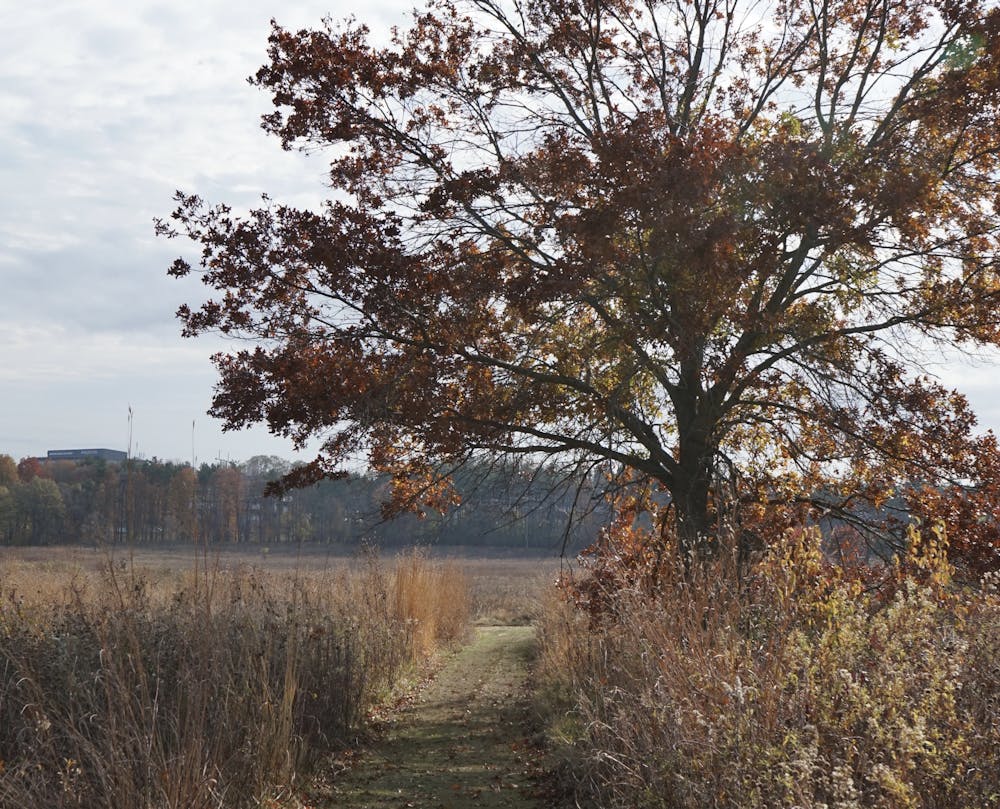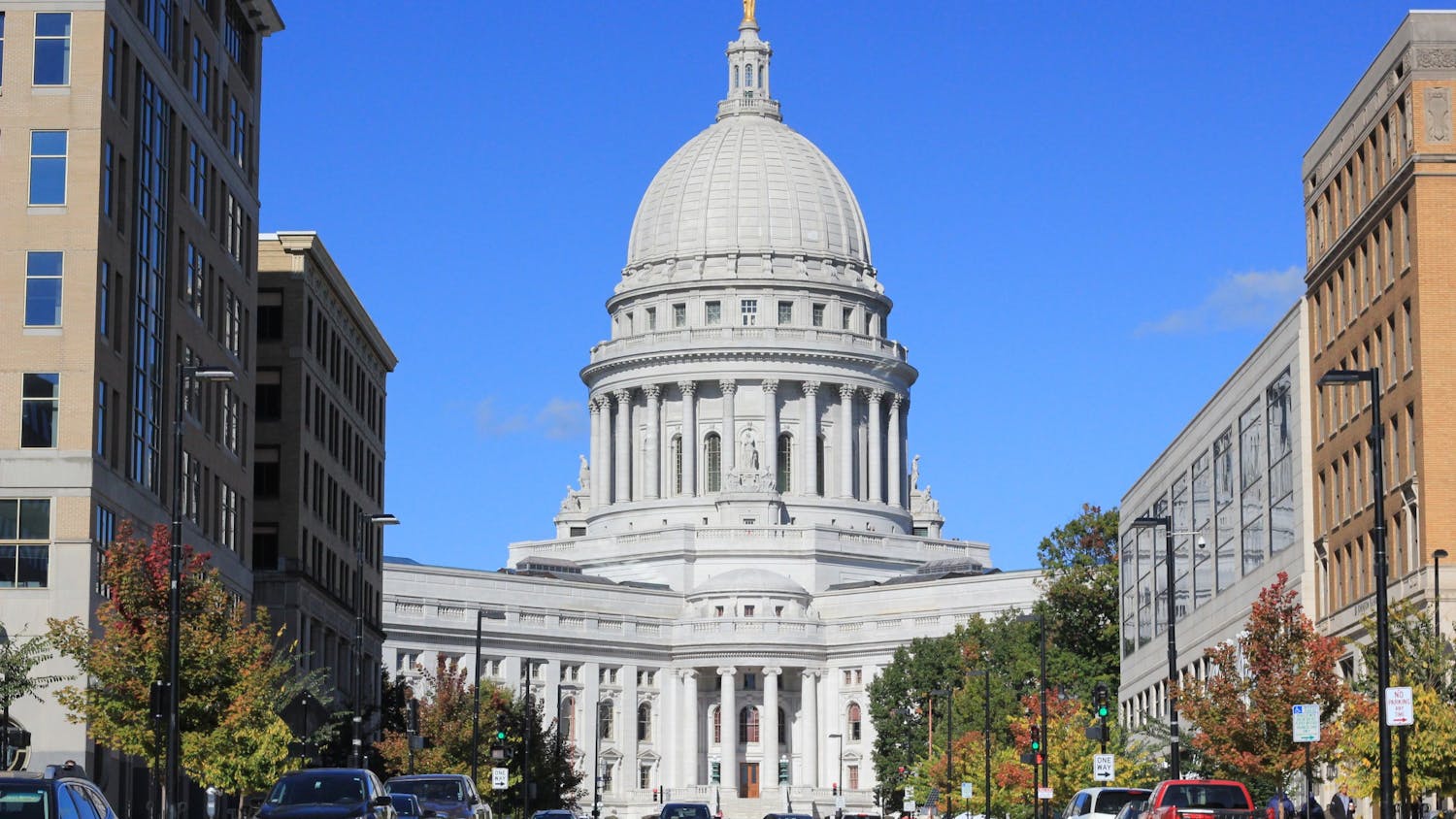In Madison, it’s beginning to feel a lot like springtime.
After weeks of temperatures in the high 90s, an immediate drop to 70 degrees and heavy rain in early August led to common lilacs breaking dormancy in October, according to a blog written by David Stevens, Longenecker Horticultural Garden curator at the University of Wisconsin-Madison Arboretum.
And it’s not just the flowers feeling the effects.
Last winter was the warmest recorded in Wisconsin’s history, with average temperatures nearly 10 degrees warmer than normal. This increase in temperature leads to fewer days where rain water can freeze into snow, Dr. Dan Vimont, professor of atmospheric and oceanic sciences at UW-Madison told The Daily Cardinal.
“It's almost unheard of that we had so much rain during the winter,” Vimont said. “And that rain-on-snow fundamentally changes the characteristics of winter.”
Increased temperatures prevented Lake Mendota from freezing over, leading to the cancellation of the Lily’s Classic hockey tournament.
“I’m very disappointed that Lily’s Classic was canceled,” Madeline Haug told the Cardinal, a UW-Madison sophomore. “I’ve heard from a lot of people that in years prior it was a lot of fun.”
But students are not the only ones being affected by warm rainy winters. David Stevens, curator of the Longenecker Horticultural Gardens at UW-Madison, told the Cardinal local wildlife is struggling to adapt.
“For our native woody plant species, this is uncharted territory,” Stevens said. “They are experiencing repeat extreme stressors that they have never seen before during their evolution.”
Extreme weather
The 2010s was Wisconsin’s wettest decade on record, leading to extreme flooding and millions of dollars in property damage in Madison and its surrounding neighborhoods.
“Folks in Shorewood Hills and Middleton experienced 14 inches of rain in 24 hours,” Vimont said. “Those kinds of events are likely to become more common.”
These floods also leave standing pools of water at the UW-Madison Arboretum, drowning native plants, Stevens said. Even more damaging is the extreme droughts.
The 2020s have started with 4 straight years of drought, with 2022 and 2023 being two of the driest years on record, according to the Wisconsin State Climatology Office. The native plants at the arboretum are not equipped to handle a drought of this extent, and the Arboretum’s irrigation systems cannot fully support the plants either, Stevens said.
“Keeping plants healthy has become more challenging,” Stevens said. “We lack the capacity to irrigate at the arboretum, and during the drought events, it is hard to keep moisture levels adequate.”
This fluctuation of drought and flooding has created a perfect environment for disease to spread amongst native plants, Stevens said. Armillaria Root Disease — a disease that dries out root systems of infected hosts — and the two-lined chestnut borer — a beetle native to the area — have “finished off” oaks in the Arboretum, leaving an “irreplaceable hole,” he said. With drought, flooding, disease and increasing urbanization killing native plants, more non-native species may need to be planted, according to Stevens.
“While I love native plants, urban environments are not what these plants evolved in,” Stevens said. “We need to look for species that can complement our native species that are adapted to these conditions and our climate without becoming invasive. That may mean using a tree species native to elsewhere in the country or the world.”
Additionally, Wisconsin recently had its first ever February tornado, killing cattle, hitting 30 homes and causing $2.4 million in property damage in the towns of Porter and Fulton.
Adaptation and reframing solutions
Climate change is already necessitating adaptation from Wisconsin’s winter tourism industry. Outdoor recreational activities like cross-country skiing, snowshoeing and ice fishing will all have shortened seasons as a result of warmer winters.
These winter recreational activities play a large part in the culture of Madison.
“I love ice fishing,” Madison native Ike Willis said. “Madison without ice fishing doesn’t feel like Madison at all.”
Willis said he would do anything to lengthen the ice fishing season and was disappointed in last year’s winter.
But while Willis is pessimistic about the effects climate change will have on Madison, Vimont still holds hope for solutions.
Every dollar Madison spends on fossil fuels is a dollar sent out of the local economy, but renewable energy can be both more environmentally friendly and more cost effective, Vimont said.
“There are tremendous opportunities for win-win situations,” Vimont told the Cardinal. “And not just win-win, but win-win-win-win situations.”
Madison Gas and Electric has already committed to being carbon neutrality by 2050, creating a more consistent and predictable stream of energy, saving them money in the long run, their website claims.
There are many solutions individuals can take to combat climate change, such as biking or using public transportation, living in walkable communities and eating vegetarian meals.
“We need to be thinking about the impacts and planning for the impacts,” Vimont said. “Educating ourselves, learning what opportunities are out there and taking action is critical.”
Fortunately for the lilacs, Stevens wrote, it will take more than one season of “defoliation and reblooming” to bring them to an end.






